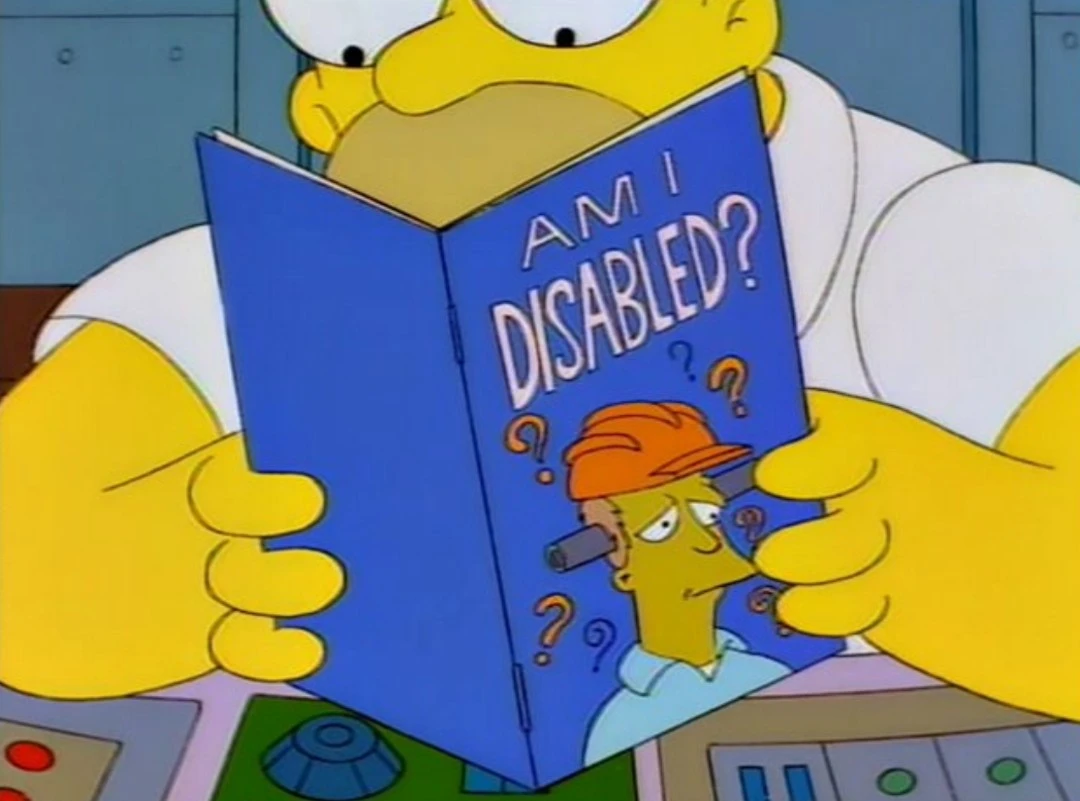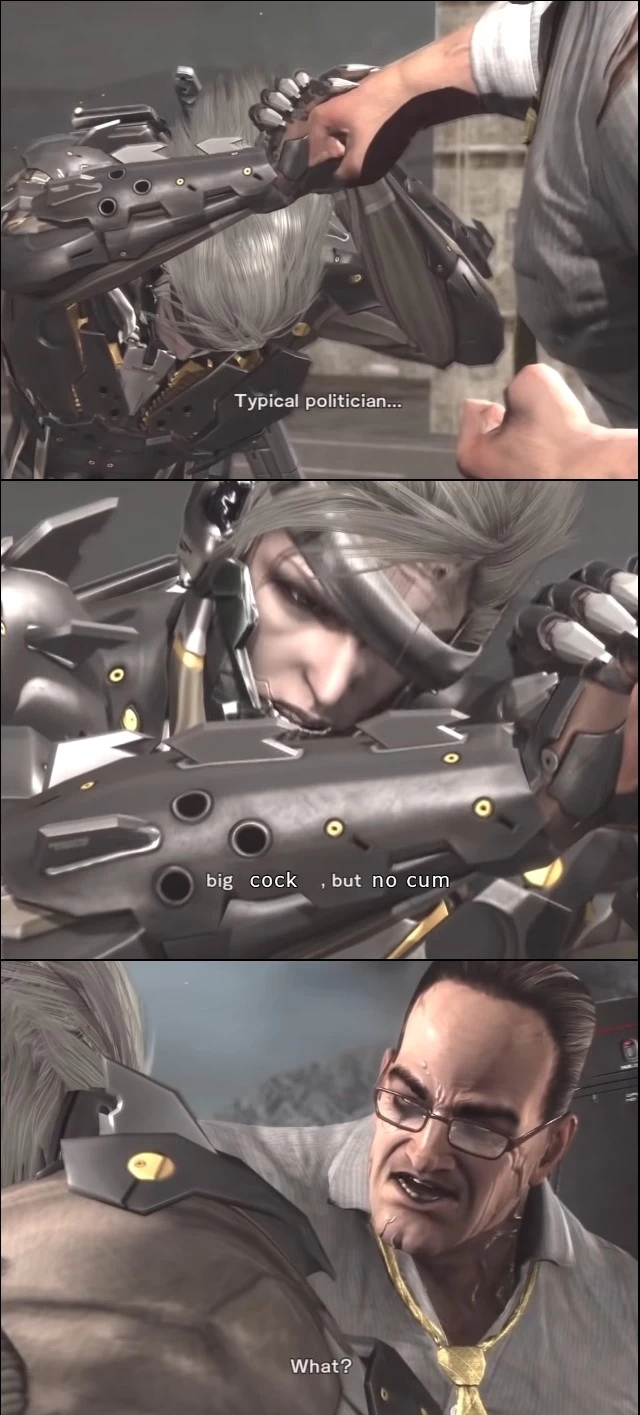When I first read the titile, I thought that the US is going to have to build A LOT to triple global production. Then it occured to me that the author means the US is pledging to make deals and agreements which enable other countries to build their own. Sometimes I think the US thinks too much of itself and that’s also very much part of American branding.
Where are my renewable bros at? Tell me this is bad.
I’m a renewable bro. I wanna see as much money pumped into as much infrastructure for renewables as possible. I wanna see solar on every building. I wanna see off-shore wind and tidal energy production. I’m keenly following development of clean, efficient, and cost-effective energy storage technologies, and much is being done in this space to support a future switch to full renewable reliance.
That won’t change the fact that we need on-demand energy now and we need to stop using coal and gas as soon as possible. We currently don’t have energy storage at scale. We will, but we don’t. So in the meantime, nuclear is probably the best option to pursue for use over the next couple of decades while we continue to invest in, and implement, renewables.
I will have to strongly disagree here. The timelines are actually the main reason why I would disqualify Nuclear power as a solution to energy, even as a temporary one.
The time from inception to going online for a new Nuclear reactor is in the range of 15-25 years. Of course we could attempt to shorten that, but that would probably mean compromising on safety. So indeed, if we want to stop using fossil fuels asap, building solar, wind, and hydro, which come online in a matter of months (maybe years for hydro), is much faster.
Aggravating this are two further issues: Current Nuclear energy production is non-renewable, and supply problems are already known to occur at current energy production levels. Second, the global construction capacity is limited, probably to around current levels. Even if we do not push for faster construction times, the number of companies and indeed people who have the necessary expertise are already at full capacity, and again, expanding that would probably imply safety problems.
That is to say, currently running Nuclear power plants are save and clean, so by all means keep doing it until renewables take over. But expanding Nuclear power to solve the energy problem is a non-starter for me, due to the timeline and it being non-renewable. And that is before we start talking about the very real dangers of Nuclear power, which are not operational of course, but due to proliferation, war, and governmental or general societal instability (due to say, climate change).
The time from inception to going online for a new Nuclear reactor is in the range of 15-25 years.
In the US. In China, nuclear reactors go from first pour to operation in 5-6 years. Economies of scale apply.
Of course we could attempt to shorten that, but that would probably mean compromising on safety.
I think it’s less that it would mean compromising on safety and more that it would mean compromising on the appearance of safety because we’d have to stop letting the courts delay construction while they indulge everybody who tries to sue to stop it with meritless claims.
Also – and I say this as a Georgia Power ratepayer on the hook for the vast cost overruns for Plant Vogtle 3 and 4 – we would need to import foreign labor or something because here in the US we are demonstrably too incompetent and corrupt to do it properly ourselves.
Exactly. I’m 100% on board with both renewables and nuclear, but the time to build nuclear would seem to have passed. We’re a few decades too late.
That’s not too say we shouldn’t be building any new nuclear plants - in particular modern designs like SMRs, but I think it would be wiser to focus our energy now on large, grid-scale storage to help smooth out intermittent generation from renewables.
If “we” meaning society could “focus our energy” on anything except profit generation, we could build hundreds of nuclear reactors in less then a decade. We could also eliminate cars and domestic flights, and all kinds of other utopian shit. While you want to live in the status quo but with magic batteries. I’d rather “focus our energy” and live in the Star Trek post-scarcity universe.
It doesn’t take 25 years to get a nuclear plant off the ground because people are too busy sitting around counting their capitalism dollars to finish the construction. There are a tremendous number of things that need to happen in addition to planning, approving, building, and commissioning a nuclear facility. I’m fact, is those economic forces that make it happen as fast as possible, because investors want to see a return on their investment. Nuclear plants - and large power plants in general - are not a back deck. They are enormously complex, and given the sensitive nature of their fuel, there are additional things that need to happen on top of what you would expect from, say, a coal or oil generator.
But I’m not sure what you are saying about “magic batteries”. How, exactly, do you plan to make intermittent renewable generation viable without some sort of grid-scale storage?
You don’t just click your heels together there times and find yourself in a star trek utopia. That’s not how things work.
Batteries exist yes. But batteries at the scale required to store the amount of energy that even a small country uses in one day do not exist, and would be by all accounts magic.
Nuclear reactors are not magic, they are real, and they can be built, and should be built both to increase our energy production and replace fossil fuels and of course supplement renewables. Because if nuclear reactors are not built, that supplemental energy won’t come from magic storage, it will come from fossil fuels.
When did I say anything about batteries?
it would be wiser to focus our energy now on large, grid-scale storage
That is a battery. But the type of battery it is describing doesn’t actually exist.
The time from inception to going online for a new Nuclear reactor is in the range of 15-25 years. Of course we could attempt to shorten that, but that would probably mean compromising on safety
It also takes 20years for a tree to grow, so I guess we should stop planting trees too. Good logic.
The rest of what you are saying is ignorant at best. “Global construction capacity” is constrained to current levels. How convenient that we can only build exactly the number of nuclear reactors we are currently building. But we can build an unlimited amount of solar panels, wind turbines and “hyrdo.”
How long do you think it takes to “build hydro?” If you ignore any and all environmental costs of flooding valleys, then sure I guess you could do it pretty quickly, you’d probably have to relocate hundreds of thousands of people, but sure that sounds more feasible then building a nuclear reactor.
Current Nuclear energy production is non-renewably because of cold-war era treaties against enrichment and breeder reactors. The timeline for nuclear fuel to run out if you allow breeders, is after the sun burns out. So that’s a non-issue. Not to mention other theoretical sources of nuclear fuel that we don’t bother even looking at because it’s cheaper to burn more coal.
If you read my comment, I specifically add a caveat for hydro.
In terms of solar and wind, of course we cannot just build unlimited amounts, but we can ramp up capacity a lot more easily and quickly than with nuclear, because it’s a lot simpler and faster to build (especially solar). Imagine if we increase construction capacity by 10x tomorrow; we would still need to wait for 15 to 25 years to see any impact with nuclear, while solar and wind would go online next year.
Of course, ramping up production brings an increased risk of manufacturing faults and construction errors in all cases. But I would argue that any nuclear accident is a lot more undesirable than some solar or wind power going offline.
In terms of nuclear fuel, these alternative technologies may exist. But again, the time to market, and the fact that we are introducing a new technology into our vastly expanding production capacity just brings even more risk and uncertainty, which is completely unnecessary when extremely save and reliable, well tested alternatives exist (solar and wind).
So what I am arguing is that we focus our limited resources and money (the latter being the key factor in our economy, unfortunately) on the things that have the largest impact in the shortest amount of time, and that is solar and wind (and to an extent hydro).
And again, all that analysis is graciously disregarding the very real risks of nuclear power (instability, war, proliferation).
Of course, ramping up production brings an increased risk of manufacturing faults and construction errors in all cases.
I disagree. I think that people make fewer mistakes in each repetition, the more times they repeat an action.
Right now nobody has mastered the building of nuclear plants. As a civilization, we’re on the equivalent of our third day on the new job. If we committed to tripling world supply, that would lead to us mastering it. We’d be at the equivalent of having been at the job for a couple years.
What does “mastering it” really mean? Usually a big part is learning from mistakes. Which I do not think is something you want to do with nuclear power.
But here is the thing. There is no resource constraint between building nuclear power and building solar or wind, or even hydro. They use difference resources, they require different sectors of the economy to realize, and they require different engineering. They don’t compete with each other except in the minds of people who favor one over the other for some reason.
Nuclear competes with fossil fuels, that’s it. So do renewables, but on a much more limited basis. They do not compete iwth each other. No individual or government is ever looking at a choice between Wind power and Nuclear power and choosing one over the other.
Except for funding, obviously.
And as I said, the main point is we need clean, renewable energy as soon as possible, which only solar and wind (and to some extent hydro) can provide.
What exactly do you mean by “in the meantime”? What kind of timeline do you envisage for the large scale rollout of nuclear energy? Do you seriously think it’ll be possible to roll out nukes faster than building some more storage?
The problem is “some more storage” can’t be done, the technology doesn’t exist
FYI, the railroad thing is bullshit much like towers lifting cement blocks up and down. Dams are great, but they are extremely dependent on location and most of the earth is unsuitable for them.
You’ll be blown away when you learn about batteries.
facepalm
Battery technology is nowhere near good enough, or cheap enough, to support storing energy to meet the demands of entire populations.
You are not a true renewable energy bro if you allow nuclear to be built /hj
Hand job?
Today, there is 413GW of nuclear capacity globally. Of that, 57GW is in China.
China plans to reach 300GW of nuclear capacity by 2035. Assuming linear growth, that number will be around 550GW by 2050 (more than double the current global nuclear capacity) There are currently 57 nuclear power plants under construction. 21 are in China. 1 is in the US.
This US pledge is basically useless.
🥱
Does anyone actually take these decades-long pledges seriously?
From a country that’s preventing shutdowns on the monthly, fuck no.
Yeah a 20 year commitment when the next party will revert all progress means nothing.
“I’m going to go to the gym three times a week until 2050!”
Then compare the effort in going to the gym three times a week with the effort in tripling the world’s supply of nuclear power.
Absolutely not and this is the shit that infuriates me about the Dems as a lefty. Too much lip service and not enough concrete action.
If you ever criticize the president, someone will undoubtedly give a long list of similar ‘actions’ as accomplishments to claim that you’re foolish for the criticism.
Exactly. Without a proper foundation these nuclear plants are never going to get off the ground. We need concrete action. We need trucks. We need aggregate. We need forms and rebar. We need a platform to base this power generation.
Nuclear power isn’t bad. I used to be anti-nuclear energy because of the specter of Chernobyl, 3 mile island, and Fukushima. But learning more about it, there haven’t been many actual problems with nuclear energy.
Chernobyl happened because of mismanagement and arrogance. 3 mile happened because of a malfunction. Fukushima happened because of mismanagement and failure to keep up safety standards in case of natural events.
These are all things that can be mitigated to one extent or another. it’s much cleaner than other forms of energy, outputs way more than solar or wind, and with modern technology can be extremely safe. I think we should be adopting nuclear, at least as a stopgap until renewable tech reaches higher output in efficiency.
Kinda annoyed that these investments are going into foreign countries, when we are one of the major contributors to greenhouse gas. We should be building them here first to mitigate our own ghg contributions, then helping smaller countries build theirs.
I do still have concerns about waste removal and storage tho, but I’m sure we could figure that out if we actually wanted to. But I doubt we do, because “dA cOsTs” or some shit.
Chernobyl had such a far-reaching environmental impact. Beyond even the radioactive pollution stuff, it scared everyone away from nuclear power and back to fossil fuels for energy production. I sometimes wonder where we’d be wrt CO2 levels if nuclear energy adoption had continued along the same trend as it was before Chernobyl. Would we have had substantially more time to mitigate climate change? Maybe we’d have been in the same boat (or an equally bad boat) due to other factors; maybe it would have stymied renewables even more due to already having a readily available and well-established alternative to fossile fuels in nuclear power. Idk. But if someone wrote one of those what-if alternative history novels about the subject, I’d read the heck out of it.
Imagine if every oil spill was taken as seriously
Wow. Well fucking said, my friend. You are absolutely right.
Or every preventable death from coal.
Or all the deaths resulting from our decision to rely on Russia for energy.
Damn. This one is so spot on. Definitely remembering that one for the next time the Chernobyl argument comes up.
Chernobyl had such a far-reaching environmental impact.
Ironically, the main direct impact (i.e. excluding the indirect, but far more important, policy impact you talked about) is that it basically created an involuntary nature preserve.
a nature preserve with fancy radiaton-eating mushrooms, to boot! (the jury is still techinically out on whether or not they are “eating” it, but in the immortal words of Fox Mulder, I want to believe)
Nuclear is too expensive. It doesn’t make sense to build new reactors.
It doesn’t make sense to build one new reactor. Tripling the world’s nuclear power generation makes a lot more sense. At that scale it’ll be cheaper.
No it won’t lol
Most things decrease in price as production scales up.
Is called Economies of scale.
There’s also a lot hype around process improvements such as Six Sigma. Some of this has come out of factories and into IT and software dev such as kanban boards and agile.
Strangely most think that software development does not have economies of scale.
Anyone still worried about the safety of the method is an ignoramus. “Dying slowly to lung cancer and the environment cooking me alive is so much better than the one-in-a-billion chance of having to eat some prussian blue”
Waste removal is my biggest concern. Unless the plans to expand also come with ways to recycle the waste, we’re just setting ourselves up for giant exclusion zones throughout the globe, most likely in small countries where the plants are imposed on them by foreign economic powerhouses and then they’re told to figure the waste out themselves.
Not to mention “just bury it” is neither futureproof nor is it good for the non-human inhabitants of our planet; sure if those concrete containment cysts in the desert ever fail it will “only” be leaking radiation into the desert, but any desert is still home to hundreds of species of living things and its own complex ecosystem. “Desert” doesn’t actually mean “devoid of life”; there are no good locations to bury it and forget it.
Let’s talk about the absolute devastation mining rare materials does to ecosystems and the exploitation of third world countries that it’s led to. We’re already implicated in so much violence against the earth itself and colonialist exploitation, and I’m supposed to support gods know how much more of that for Uranium from Kazhakstan (45% of the worlds’ production in 2021)? That’s basically begging for more forever wars over energy resources in the middle east.
“We’ll figure out long term solutions after the infrastructure is put in place” is how we got to where we are with fossil fuels AND landfills.
I’ll fully support any plans to make a push toward nuclear, but the foremost concern of that push should be waste recycling. After that’s figured out, everything else is small potatoes. It would even make the long-term costs cheaper than fighting for new material and figuring out million-year half-life hazardous waste disposal. A nearly unlimited energy supply that doesn’t fuel wars and is safer than the current system? Sign me the fuck up.
Regarding waste; nuclear waste can be turned into diamond batteries.
If they manage to release, the idea is that small cell batteries can self-recharge themselves practically forever (20,000ish years?). Battery dead? Remove it, swap it, wait. Battery dead? Insert the one you removed previously, the Uranium inside replenished the charge.
Neat stuff given that it is made from waste byproduct.
That’s cool as fuck! Now, how do we implement it?
I should have been a little more clear: I’m not worried about a lack of ways to properly neutralize and dispose of the waste, I’m concerned that they will not be implemented because they are deemed unprofitable.
Already the U.S. runs nuclear power, and yet we still haven’t implemented waste recycling (as of 2022 iirc the article I read); why? Presumably because ultimately it does not serve the interest of capital. So get plans to create that infrastructure into effect, and I’ll get on board with any expansion. Until that happens, it’s just hopping on the dick of this new tech because it’s bleeding edge and assuming the infrastructure to handle it will follow (which has worked so well for e-waste and cars and fossil fuels and plastics and…)
Not that sticking to fossil fuels in the meantime is a better alternative. We should focus on energy production that doesn’t have the potential to immediately kill us should the waste-containment fail: solar, wind, geothermal, hydroelectric. Hell, we already have stockpiles of a majorly combustible fluid that requires an ever-increasing amount of energy to harvest, why not exchange it for one that doesn’t also cause biosphere collapse as a side-effect: Hydrogen?
None of these are environmentally friendly either, and so I’d still prefer to see nuclear in the long run instead. Strip-mining Uranium is still better than the massive amount of mining needed to get the rare metals necessary for solar at large scales, wind farms are destructive to local wildlife, hydrogen can explode and needs a constant source of water to produce while requiring a way to dispose of all the sediment generated, dams and massive water reservoirs are a blight on the landscape and disrupt entire ecosystems; I have no clue how geothermal is even harvested, but if the other renewables are anything to go by…
It’s not “da costs”, it’s actually really, really really expensive to build new nuclear reactors. Most of that comes from increased labor costs, which in turn have ballooned largely due to increased regulation and oversight requirements, which I would argue is not something we should do away with.
I wouldn’t necessarily mind having a reactor or two acting as base generators especially during the winter, but
- In Germany we’ve been searching for a secure waste site since the first reactor went online in 1957. If we haven’t found it yet, we never will.
- There’s not really a reason to hope for cost reduction of reactor construction once we do it at scale, because requirements and local acceptance are too heterogeneous to implement any sort of scaling construction. Every jurisdiction will have its own risk assessment and usually the locals are none too happy about a reactor close to them. I just don’t see something happening in that regard. Wind turbines and solar panels on the other hand can be churned out in factories at scale, which is why they’re so cheap, comparatively.
- Therefore, personally I’d rather invest in green H2 as an energy storage solution. We can easily generate an enormous electricity surplus during the summer months, but lack long-term storage of the electricity. So we shut off solar and wind farms when they’re over producing. Wouldn’t it be neat to instead let them keep generating and use that surplus energy to power power-to-gas plants E. G. with H2? It’s an enormously power-hungry process, but if you do it when power is basically free…
Oh wait, we’re already doing that and it’s already cost-effective. Now, if we were to take that process and build it at scale… for example by not spending 12-20 Bn 💶 to build another Flamanville, Olkiluoto or Hinkley Point C… I think that might actually work.
It’s not bad, its just bullshit. None of that shit is going to happen, and if it does happen, it’ll be China leading the charge not the US.
Yeah, but China bad. Remember?
Personally don’t like China, but I will say when they want shit done they get it done.
Nuclear power is good imo. Batteries are not a viable solution to the intermittency problem of renewables, you need that baseload
It’s not often I agree with you guys, but this is one of those times. If we’re aiming to reduce out energy usage we are going to seriously limit ourselves for the future. We need lots of renewables with a strong baseload (nuclear), because energy usage is most likely only going to go up. Especially if we want to get into vertical, local farming and stuff like that.
Well you’ll never see it under capitalism, that’s for sure.
Bill Clinton used to do this. Set goals and agreements that were like 30 years away. He did this alot. This is not new and is basically a way to look like you are doing something, but you and your administration would be long gone before there can be any accountability.
Tbf, long term goals are a good thing. National planning having a lifespan of 4-8 years is fucking insane, and probably contributes non-trivial to federal expenditures and waste. We’d be better off if we could follow long term goals. But you’re right, though, it was performative planning by and large.
Actual genuine question here. Has any US administration made a decades long plan like this, announced it to the public, and then a future administration saw said plan through to fruition?
I believe both exiting Iraq and Afghanistan qualify.
Maybe not exactly what you’re getting at though
That qualifies.Thanks you!
Yes.
Unfortunately, said plan was dismantling the railroads in favor of the Interstate Highway System.
Nope.
Maybe the panama canal? The Hoover Dam? But yea not much, the US hasn’t done large projects like that since private interests figured out they could milk huge sums of money by contracting and never delivering anything.
As a general fuck-up in life I’ve found it far more valuable to make promises on a timeframe I can manage, even if they’re really tiny, than to make big promises.
Long term goals? Sure. Long term deadlines? No. We’re either not going to meet them and nobody is going to be held accountable. Or we are going to meet them and we could’ve done better.
You don’t trust a person or business to keep their promise 30 years from now, why would you trust the US government?
This. A 30-year goal needs to have 30 sets of one-year objectives to be tracked.
Sounds like typical politicians.
2050? They probably know this shit isn’t going to happen and just put it out there to make it look like something is being done.
Next they’ll say that fossil fuels will be phased out by 2075.
I’ll believe it when I see it. I’d prefer that they build something modern rather than hauling out the tired old plant designs we’ve been using since the 70s.
Small modular reactors are modern. And it’s where the majority of the research is happening.
It’s a bit of a chicken and the egg situation right now. Once the factories ramp up, they’ll be pumping out some of the cheapest power producers by MW ever designed.
Unfortunately, those factories can’t ramp up until the sales start coming in, and the sales aren’t coming in because without the factories going full steam ahead, it’s incredibly expensive to make the reactors.
Solar and wind had the exact same problem back in the day. They just didn’t have two separate lobbying groups trying to kill them off.
Are US pledges like this worth much?
It depends on who you are and what you think about/place value on. This news has little value to cynics, but may have value to investors.
How about cutting our energy usage?
That’s not going to happen.
It’s actually supposed to undergo fluctuation. Less this year more next but theirs a minimum based on houses/hour. Unfortunately you can only go up as the population increases.
You mean a maximum per* house?
Good point, you should also look into bringing the world population down to less then 100million.
Disinformation. A majority of power use is industry. Also careful, depopulation is fascist narrative which pushes for a mass genocide.
That was obviously tongue-in-cheek pointing out the flaw in saying “let’s just cut usage.” A majority of industry uses that energy to support the human population. You can’t just cut it off. It’s an untenable solution just like reducing the population to 100 million.
A lot of industry is completely superfluous, as seen by amazon overproducing and then dumping islands worth of material into landfills when they don’t sell. Some things obviously still need to be made but we could stop producing 99% of stuff and be way better off for it.
Do you see the junk mail circulating through the US postal system as superfluous?
Obviously.
That is also true. But the reason that shit exists is because of capitalism. Someone makes money from polluting for no other reason. The only way to fix that problem is changing our society to something that doesn’t allow random dick heads like musk or bezos to profit off of consumption.
Where are my renewable bros at? Tell me this is bad.
It’s a waste of resources. Perfect timing for the NuScale drama https://www.globenewswire.com/news-release/2023/11/15/2781465/0/en/NuScale-Power-Corporation-Sued-By-Block-Leviton-LLP-for-Securities-Law-Violations.html
exactly, we can’t spend that much to slow or stop climate change. it’s not an option, the money is more valuable.
What does any of what you just said have to do with the US making a pledge to increase global energy sustainability (energy and fossil fuels specifically being the crux of global catastrophe)
Sometimes I think posters just like to jab for rage bait
It doesn’t, I shared my experience understanding the article. Does a different perspective irritate you?
Nah, just calling out an attention addict
Only your hatred can destroy me
Wasn’t an attempt to “destroy you” but go off with your dramatic self!
i don’t think you got the reference ;)
I mean this seems like around the time that billionaires have bunkered up and people are roaming the wasteland scavenging for food, shelter, and safety in the blazing heat
Hey, who cares what actually happens in 30 years. This man made a pledge and that’s what really matters.
“Why talk about policy actions when this fantasy ive concocted says we are all living a video game?”
Good stuff
Its wierd to have these two posts next to each other today
https://feddit.de/post/5764680
Pleges for nuclear power if photovoltaic is already cheaper?
Anyone with basic knowledge about anything knows that diversification is generally a good thing, this applies to energy as well: you don’t command the wind/sun and large scale electricity storage is to this day an unsolved problem. For all the big plans we have about a greener and carbon limited future, we need large amounts of dependable cheap and low-carbon energy, nuclear very much fits the bill (in complement to the other low-carbon energies).
Large scale electricity storage is very much a solved problem actually. Bath county for instance has solved the problem since the 80’s.
It’s just once you take the cost of storage for solar it is no longer the cheapest power source. Our power isn’t delivered by our government for the sake of sustainability and benefiting the citizens but by private corporations who want to make profit.
The pumped hydro station I linked cost 4.36 billion USD to construct in 2022 dollars back in 1985. It also has a capacity of 24,000 mWh.
Meanwhile the F-35 project cost the US government 1.7 trillion dollars.
So let’s say new pumped hydro plants of a similar size would cost 10 billion dollars just for being excessive. Then let’s say the US government didn’t fund one jet and instead built pumped hydro storage. Then fuck it, let’s say nothing worked out the budget got blown and only a fraction of that were built so only 100 stations were built to make it a nice round number.
That’s 2,400 gWh
Idk about you but that is a lot of buffer to make any renewable much more stable. It’s actually enough buffer to power the entire country for a few hours and ideally bridge most of the night demand. For more than three times over budget and for the price of one jet for the US military.
It’s also worth noting this helps all power generation not just renewables. All power plants prefer to be kept at their most efficient output and not turn off or cool off at night while demand is low. We really just need to have a buffer for when solar isn’t active but people are in the early mornings and late evenings.
Doesn’t pumped hydro storage require natural variation in elevation?
Yes and the bigger the difference the more potential energy you can store. Fortunately the US has lots of this naturally.

some projects use old mines for this
Large scale electricity storage is very much a solved problem actually.
I don’t want to sound pedantic, but how exactly do you believe pumped storage work? It’s not that complicated: you have a dam, i.e. renewable hydro, and when you get excess electricity from elsewhere, some of the water downstream is pumped back upstream so the dam can do its thing once again. Essentially, developing hydro storage means developing hydroelectricity and dams, but if hydro’s contribution to the grid hasn’t increased much in a very long time, it’s not because of conspiracies, but simply because most of the available capacity has been tapped already: https://en.wikipedia.org/wiki/Hydroelectric_power_in_the_United_States
So, back to our initial problem: chemical storage (batteries) is expensive, environmentally dubious, problematic in many aspects and inefficient, chemical conversion (e.g. hydrolysis) is wasteful/inefficient, etc. So, no, we have no good answer to that.
You’re not being pedantic, you’re just misunderstanding. Pumped hydro storage is not a dam, it’s not a power source, it is a power storage system. You can use pumped hydro at dams but basically anywhere you can move weight up high and use gravity to recoup that is a form of storage. It is one of the most efficient ways to store electrical energy with electric pumps and turbines. The point of a dam has been to collect water that is deposited there via rain and use that to create power.
So, back to our initial problem: chemical storage (batteries) is expensive, environmentally dubious, problematic in many aspects and inefficient, chemical conversion (e.g. hydrolysis) is wasteful/inefficient, etc. So, no, we have no good answer to that.
80% of this is just flat wrong. Chemical storage are not expensive at scale, enviromentally safe, not really problematic, and so outrageously efficient basically nothing comes close. Hydrolysis is more of a chemical reaction in organics and creating green hydrogen is done through electrolysis. It’s not wasteful or inefficient IF all of the power was surplus you had to get rid of because solar does that a lot. By your own statement solar panels are wasteful and inefficient because they only have efficiencies of what 22%?
Pumped hydro storage is not a dam, it’s not a power source, it is a power storage system.
In technical terms, could you lay out what’s the difference? You’ve got a water retention system that empties into a generator and a capability to pump some of the water back upstream. What larger storages and generators do we have besides dams? None, and there’s no topographic feature that could be at an advantage there. Because the problem at hand is one of scale: https://ourworldindata.org/grapher/electricity-prod-source-stacked?country=~USA
Assuming that energy demand remains the same (instead of increasing, which we know will be the case with more electrification), and that, to keep targetting those 4000TWh produced, we replace coal and gas by wind and solar. That would mean having to store what amounts to 2000TWh of production (under an extremely optimistic assumption of 80% storage capacity for the replaced energy only). That would mean that, just to buffer out what solar+wind require in storage, we would have to surpass what current hydro produces, 8 times over.
I know this isn’t accurate (storage ≠ production, grid can be balanced out geographically, etc), but we are one order of magnitude in trouble already.
There is no upstream, you’re thinking it’s a dam but you don’t dam up a stream. You have two containers at different elevations to store potential energy.
You’re conflating a lot of things in this second paragraph. The world can generate enough solar for the entire planet off an area the size of new mexico. LA can power itself off just covering parking lots toe power itself. Then there’s nuclear, wind, tidal… All of these need a buffer because they struggle with either inconsistent production or inconsistent demand. Pumped hydro’s only purpose is to be that buffer. When you’re making lots of electricity you move mass up and when you’re needing more than you can produce you move mass down.
The US can power itself for the next 100 year off waste nuclear weapons alone… but nuclear wants to sit at a flat load. Because of this, you’d need brownouts to shed demand. Pumped hydro means you can run more nuclear and generate more electricity than the grid needs at night or whatever and pump water up a tube to another container.
Basically, the reason we use natural gas to generate power is because it is cheaper than anything and can be stopped/started with much less fuss. LNG tanks are pretty cheap, it comes from the ground at a determined rate… it’s super convenient.
But a LiFePo battery system with inverters and solar is enough to power households if done efficiently for less than $50,000. The price gets lower every year and eventually people will be able to opt out of the grid entirely.
I mean, you don’t answer the billion dollar question here. Let’s not call it a dam, but a container, and let’s not mention the need to pump anything. The amount of (potential) energy you can store is a function of the volume of the above container, isn’t it? Then, could you estimate the amount of water this container would need to be able to retain in a scenario where the grid relies primarily on intermittent energy sources? And can you propose an engineering solution to contain this much amount of water?
The intuition here is that you are re-inventing dams, without the room to build more.
I don’t agree nor disagree with the rest of what you say, I just can’t get beyond the “energy storage is a solved problem” point yet.
it seems like the development of a diverse portfolio is in the works
I’m admittedly, just an internet stranger with no formal training in interpreting media or the global energy market
















